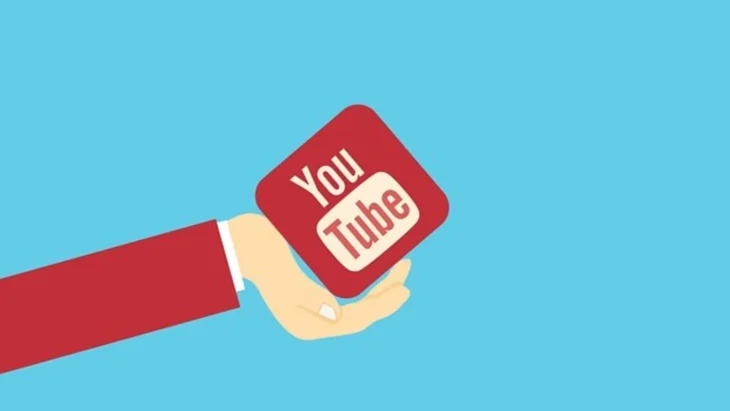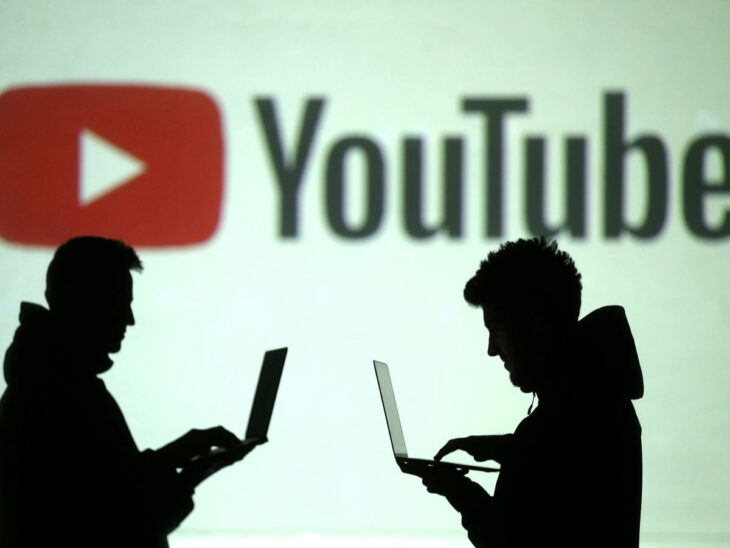How much income does a small channel have? How much does a channel with, say, 20,000 or 50,000 subscribers earn? Here I will tell you in detail. The first and most important thing is that YouTubers lie about everything. Liars are those who say that they earn nothing – so that you send them more donates, or in this way justifying the advertising in the video. Also lying and those who say that they earn millions – in order to sell you their courses and other tricks, which they actually earn.
Now I will name 10 points that will help you calculate exactly: how much money the blogger earns on the channel, and in what ways he does it.

Source: cinemastersind.com
Contents
- The number of subscribers doesn’t matter
- The cost of commercial views
- Different channels have different business models
- Sources of income on YouTube
- Can we trust Social Blade and similar services?
- Different traffic costs different money
- How much bloggers earn on English-language YouTube
- What YouTube won’t tell us in their videos
- Calculate the cost of your views based on practical experience
The number of subscribers doesn’t matter
We’ll start with the fact that the number of subscribers doesn’t matter. 10,000 subscribers or 100,000 subscribers on a channel doesn’t matter. Profitability is determined by completely different factors.
It’s very important how many views per month on the channel, and how many (on average) views a single video on this channel is gaining. Now there’s no advertisers left who would blindly believe youtuber and the number of subscribers on the channel. They’re looking at views, and even if the channel has hundreds of thousands of subscribers but each video is gaining 5,000 views, then for an advertiser such a channel will be equivalent to a channel with an audience of 5,000 active subscribers, and advertising will be much cheaper. To make money on views on YouTube to start you need to increase their number. On Lowcostsmm – https://lowcostsmm.com views, as well as subscribers and likes are inexpensive. Instagram is also easy to pump up.

Source: videosgrow.com
The cost of commercial views
It is also important to understand that the topic of the channel and the parameters of the audience of viewers determine the cost of commercial views. The following factors are important here: video language, region, and other viewer parameters. Therefore, game channels earn much less money than financial and economic channels, automotive channels, financial and other channels where there is money.
It is important to understand that, for example, if the channel even has viewers speaking in English, the cost of traffic will be very different for the channel watched by Americans and for the channel watched by Indians. Because in the US the economy is more developed, the cost of advertising is higher and accordingly this channel will make several times more money. In India the economy is times weaker => cost of advertising is less => profitability on the channel will be times less. The settings of the channel do not matter here, what is important is where your videos are being watched from.
If you are using Russian-language channel dedicated to computer games, mostly schoolchildren watching it (mostly non-paying audience), then advertising will be cheap – you will be paying 20-30 cents for 1000 commercial views. At the same time, if it’s a channel on real estate or any other monetary topic, then there 1000 commercial views will cost from 1.5 to 3 dollars.
Also within the same language, different locations also have different economics. Because CPM (cost per 1,000 commercial views) is a market factor. And if you are watched from USA, then you will have a much higher return on the same English language than if you are watched in India also in English, and the difference will be very significant.
You do NOT get paid for views.
It is important to understand exactly how views are monetized. You do not get paid for the views themselves, because they are not worth anything in and of themselves. Monetization must be enabled on the channel.
For direct advertisers, views, channel topics, and so on also matter. If we’re talking about monetizing content, not all content is suitable for advertising. Some videos get yellow monetization badges and make almost no money. Usually these are political videos, 18+ videos, something aggressive, war-related (including historical/contextual) and this has a direct impact on profitability.

Source: nerdwallet.com
Different channels have different business models
There are channels that make money from high traffic and views. There are channels that have little traffic, but they are highly specialized and they can rake in much more money, but not from advertising, but in other ways. For example, on a real estate channel, YouTube helps authors attract clients to realtors. A lot of business channels are appearing on YouTube right now – big companies, banks, entrepreneurs, experts experts in their business.
Sources of income on YouTube
Most youtubers get their money from several sources:
- Advertising through the media network/AdSense. Directly, the very same monetization, when ads are shown in the videos, and the authors get paid for it.
- YouTube Premium. Premium subscription, which the viewer buys in order not to see ads. Part of this money is distributed among the channels he watches in proportion to the time he spends watching the channel.
- Direct advertising. These are different ways of advertising integration and stand-alone commercials.
- Sales of goods, services, development of a personal brand.
- Donations. Donations from your viewers. They can be made with the help of third-party services or by means of YouTube itself (superchat, sponsorship, superthank you, superstickers, etc.).
- Crowdfunding. Targeted funding or fundraising for a specific task by viewers.
- Dedicated funding. But this funding is not by viewers, but from certain organizations.
Partnership programs of various stores. You must have seen a lot of videos that tell about interesting gadgets from AliExpress, with referral links in the description. When someone follows such a link and makes any purchase, the author who placed this affiliate link receives a certain commission.
Premium offers from advertisers. The point is that the advertiser redeems all advertising positions on the channel through the means of Google, after which the channel receives an increase in profitability, on average, by 20%.
- Merch (sales of branded goods).
- Paid opinions.
Most youtubers combine 2-3 or more methods of earning. We usually subject the income from monetization to evaluation, because other ways of earning are hardly subject to evaluation, and we can only guess how much the integration cost approximately on this or that channel.

Source: branditbd.com
Can we trust Social Blade and similar services?
Is it possible to believe the information from services like Social Blade, which show how much money youtubers earn and not only. If we open up my Konoden channel as an example and see what the service shows, then I earn from $40 to $684 per month, but the range is very large. It’s really a big difference to make 40 bucks a month or almost 700 bucks a month. Where is the truth?
The truth is somewhere in the middle. If we open the analytics of my channel, we can see that in the last 28 days and earned $ 281, that is, ~half. It turns out such a spread due to the fact that the service does not take into account the topic, CPM, language and region.
Different traffic costs different money
You have to understand that the traffic is very different. It differs not only in parameters of your audience, viewer location, and paying capacity of audience. There is, for example, traffic from short videos (shorts), and profitability there is very different.

Source: freepik.com
How much bloggers earn on English-language YouTube
So how much do bloggers earn in Bourjunet? On average, their yield is 2-5 times greater than in Runet. These are good figures. If you take for example comparable subjects, then, all other things being equal, on the subject of promotion on YouTube, financial and economic subjects, these bloggers earn 6-8 dollars per 1000 views.
What YouTube won’t tell us in their videos
YouTube will never tell us how much money advertisers actually bring in, and how that money is then spent. As it says in YouTube’s rules, the platform takes 45% for itself and pays authors 55%. However, many youtubers have regularly encountered the fact that their income is deducted and some kind of recalculation is made. What happens with this money, are these calculations correct and doesn’t YouTube take something for itself? There are a lot of conspiracy theories here, and we can only guess, but we have a certain basic level of trust in YouTube, although there are just as many questions.
Also, YouTube, for example, claims to refund advertisers if there was some mishap involving ad placement in spam content, or if there were invalid clicks. But I’m an advertiser on YouTube, too, and I see that sometimes there’s invalid traffic, but I’ve never been refunded for such traffic in the advertising cabinet.

Source: mirror.co.uk
Calculate the cost of your views based on practical experience
Let’s calculate the value of our views based on practical experience. Let’s take, for example, my channel’s stats for the year. The Konoden channel has 1,800,000 views for the year and a return of $2,440. This way we can calculate the average annual cost per thousand views.
